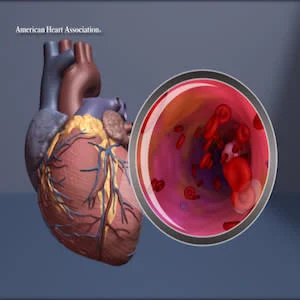A new rapid imaging protocol for diagnosing heart disease has been shown to improve care and reduce costs in a resource-poor setting. The rapid Cardiac Magnetic Resonance (CMR) protocol was embedded in clinical care with training and education, which resulted in important and frequent patient management changes that appear beneficial for both patients and the healthcare system, according to a new study published in Journal of the American Heart Association.
The study was conducted in Peru, where cardiovascular disease affects 3.2 million (16 percent of the adult population), leading to a significant loss of well-being, estimated at 281,829 Disability Adjusted Life Years.
In this study, researchers developed and tested a rapid CMR protocol using contrast dye that measured cardiac structure, function and scarring. The rapid diagnostics worked with existing infrastructure, took 18 minutes and cost $150 per patient resulting in important changes in patient care.
The researchers conducted scans on 98 Peruvian patients (average age 52, 60 percent female). Scanning found 26 percent had hypertrophic cardiomyopathy, 22 percent had dilated cardiomyopathy, 15 percent had ischaemic cardiomyopathy (when cardiovascular disease or heart attack cause the disease), and uncovered 12 other pathologies including tumours, congenital heart disease, iron overload, amyloid plaques (abnormal protein deposits), genetic syndromes, inflamed vessels, clots and valve disease.
According to the researchers, CMR revealed an unsuspected new diagnosis in 19 percent of patients or led to a change of treatment in 37 percent. In 5 percent, a change in care management was suggested but not delivered due to access barriers (cardiac surgery or device therapy).
In addition, the rapid CMR satisfied all imaging needs in 89 percent of patients. In 7 percent where CMR was the first imaging technique performed, no further non-invasive imaging was needed. CMR did not miss any diagnoses initially found by echocardiography, the researchers noted.
"Our CMR strategy was three to five times cheaper than current CMR exams in Peru," said James C. Moon, MD, study lead author and professor at Barts Heart Centre, St. Bartholomew's Hospital in London. "It also can be delivered two to three times faster and is easier than conventional CMR."
In an accompanying editorial, Christopher M. Kramer, MD, University of Virginia Health System in Charlottesville, notes: "To make this proof-of-principle study a reality in much of the developing world, imagers will need to be trained at sites with appropriate scanner technology. Only in this way will an abbreviated protocol for evaluation of cardiomyopathies be implemented. This is an exciting time for the potential of broadening the impact of CMR throughout the developing world."
Source: American Heart Association
Image Credit: American Heart Association
References:
Menacho K, Ramirez S, Moon JC et al. (2018) INCA (Peru) Study: Impact of Non‐Invasive Cardiac Magnetic Resonance Assessment in the Developing World. J Am Heart Assoc. 7(17) Originally published 29 August 2018 DOI: 10.1161/JAHA.118.008981
Latest Articles
heart disease, cardiac magnetic resonance, CMR
A new rapid imaging protocol for diagnosing heart disease has been shown to improve care and reduce costs in a resource-poor setting. The rapid Cardiac Magnetic Resonance (CMR) protocol was embedded in clinical care with training and education, which resu






